Leonardo di ser Piero da Vinci, an Italian Renaissance genius, is an inventor, artist, engineer, musician, architect, anatomist, geologist, mathematician, botanist, painter, sculptor, and a writer. As the first world-class science museum in the country, The Mind Museum together with Grande Exhibitions, feature the works and life of Leonardo Da Vinci in an exhibition entitled Da Vinci – The Genius. The exhibit that opened last September 1 aims to present to the Filipino public the brilliance of Da Vinci beyond The Last Supper and Mona Lisa.

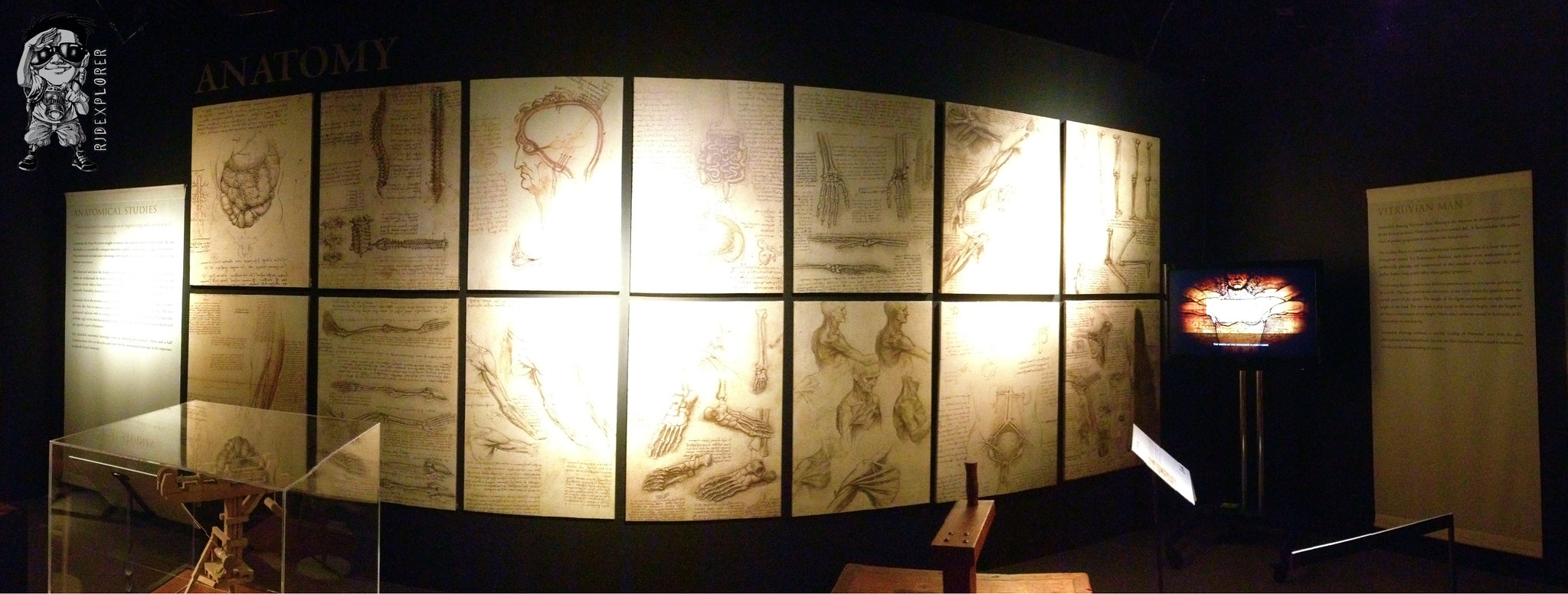

It shows full-scale interpretations of his works and studies of his known arts. The exhibit hall was divided into some parts: Flight, Physics, Civil Machines, Anatomy, Codices, Renaissance Art, Military Engineer, Music and Optical, and Hydraulic and Aquatic. It is also interactive that visitors can actually able to push, pull and crank some of these exhibits.
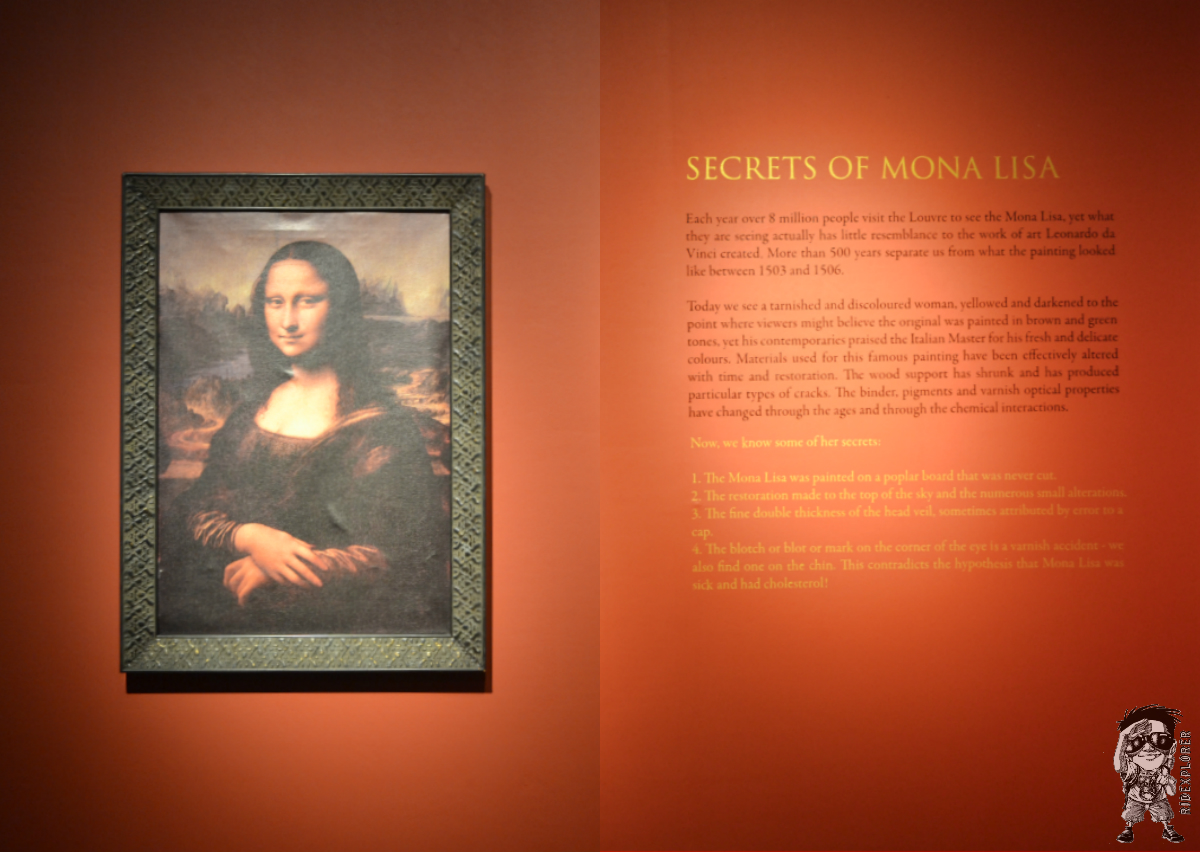
FLIGHT
“There shall be wings! If the accomplishment be not me, ‘tis for some other.” – Leonardo Da Vinci.
The concept of flight was already in the minds of engineers and inventors in the 15th century, but it was Leonardo who first studied the science of flight. He worked on flying machines based on wing movements, analyzed the flying patterns of birds and bats and looked at the anatomy of their wings.

This section has a total of 11 flight related works that will make you realize how ambitious Da Vinci to produce a machine that will make humans fly. It presents his versions of a glider, parachute, helicopter and some devices he developed for his flying studies.

PHYSICS AND MECHANICAL ENGINEERING
“I have been impressed with the urgency of doing. Knowing is not enough; we must apply. Being willing is not enough; we must do.” – Leonardo Da Vinci
He believed that Mechanics was the key to understanding the world. He studied the behavior of elements – water, air, and light – and identified patterns in the way these acted under different circumstances. He made drawings depicting the swirling of water, currents of air, and the nature of light with its shadows and reflections.
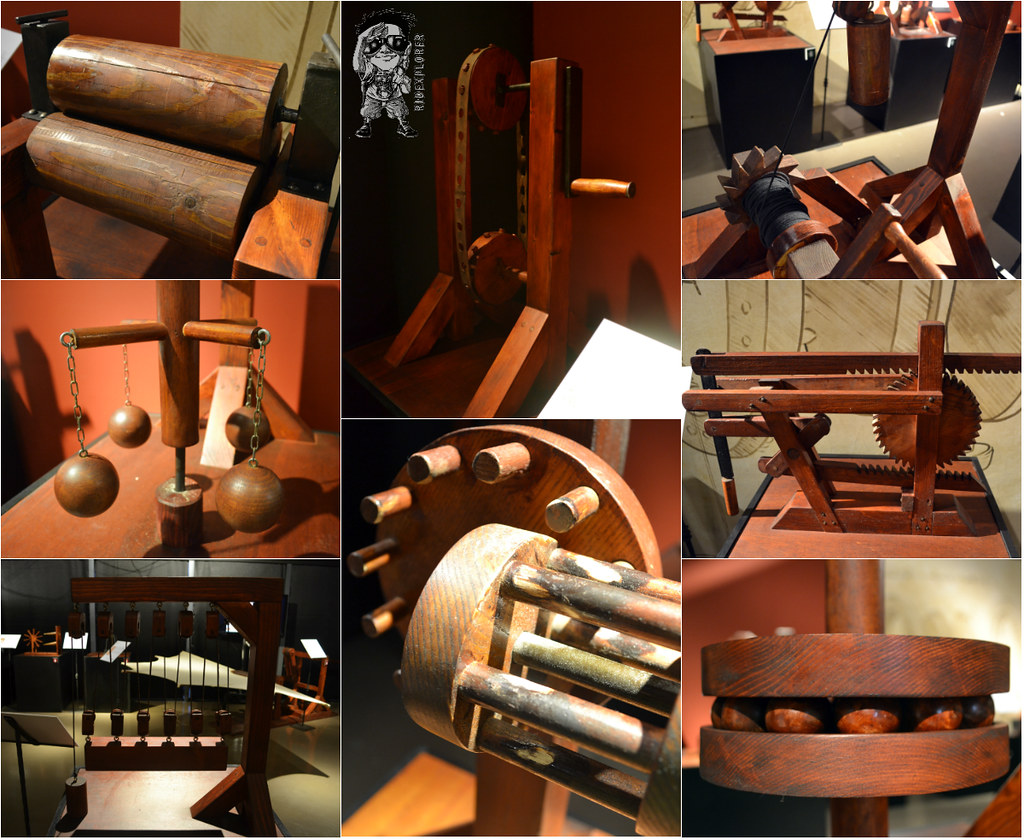
The section has 13 interactive exhibits that you can push, pull and crank. The devices in this section show Da Vinci’s fascination with force and friction, rotation and motion, and lifts and weights. The devices feature his ideas of toothed wheels, rotating shafts, cranks and gearwheels, ball bearing, rope and pulley system, locking system, and rotating cams (wheels with shaped bumps on them).
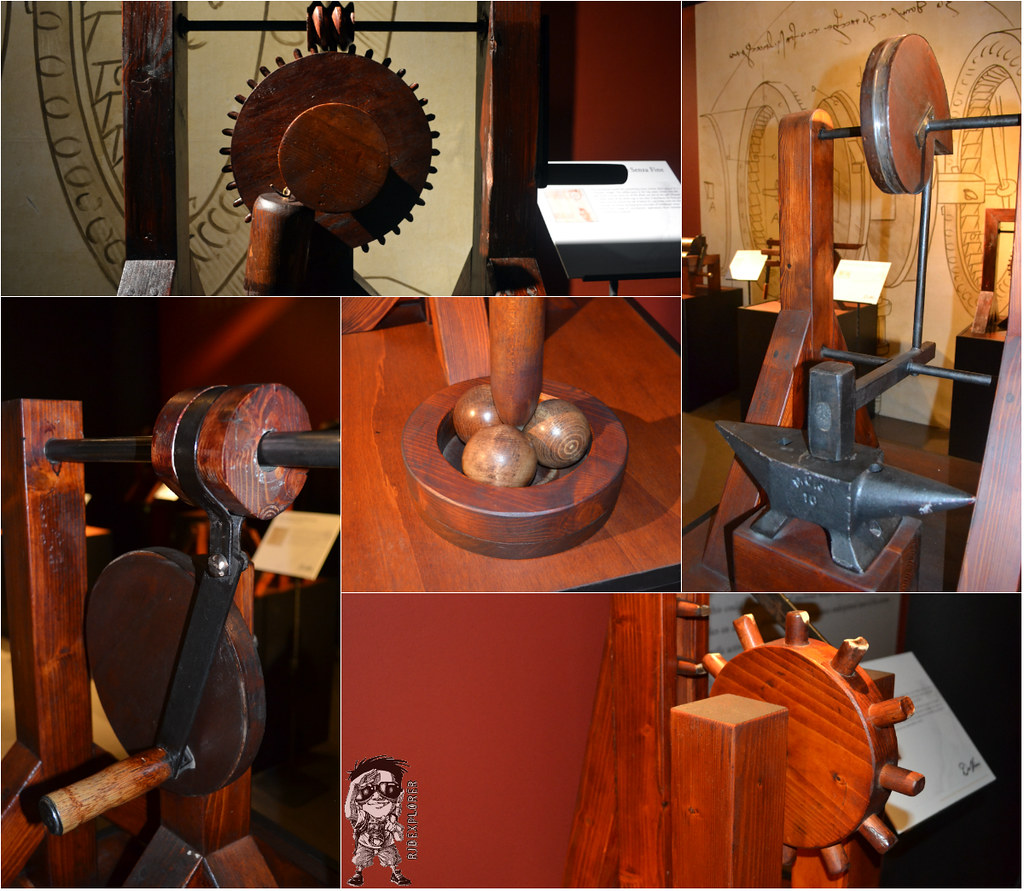
CIVIL MACHINES
“There are three classes of people: Those who see. Those who see when they are shown. Those who note see.” – Leonardo Da Vinci
Many of his mechanical drawings are beautiful works of art. Others are rough sketches, concentrating directly on the mechanics of the device. Often, hasty notes in his famous “mirror writing”, set out further observations about how to optimize efficiency and improve speed. Frequently his work made vast improvements on machines which already existed.
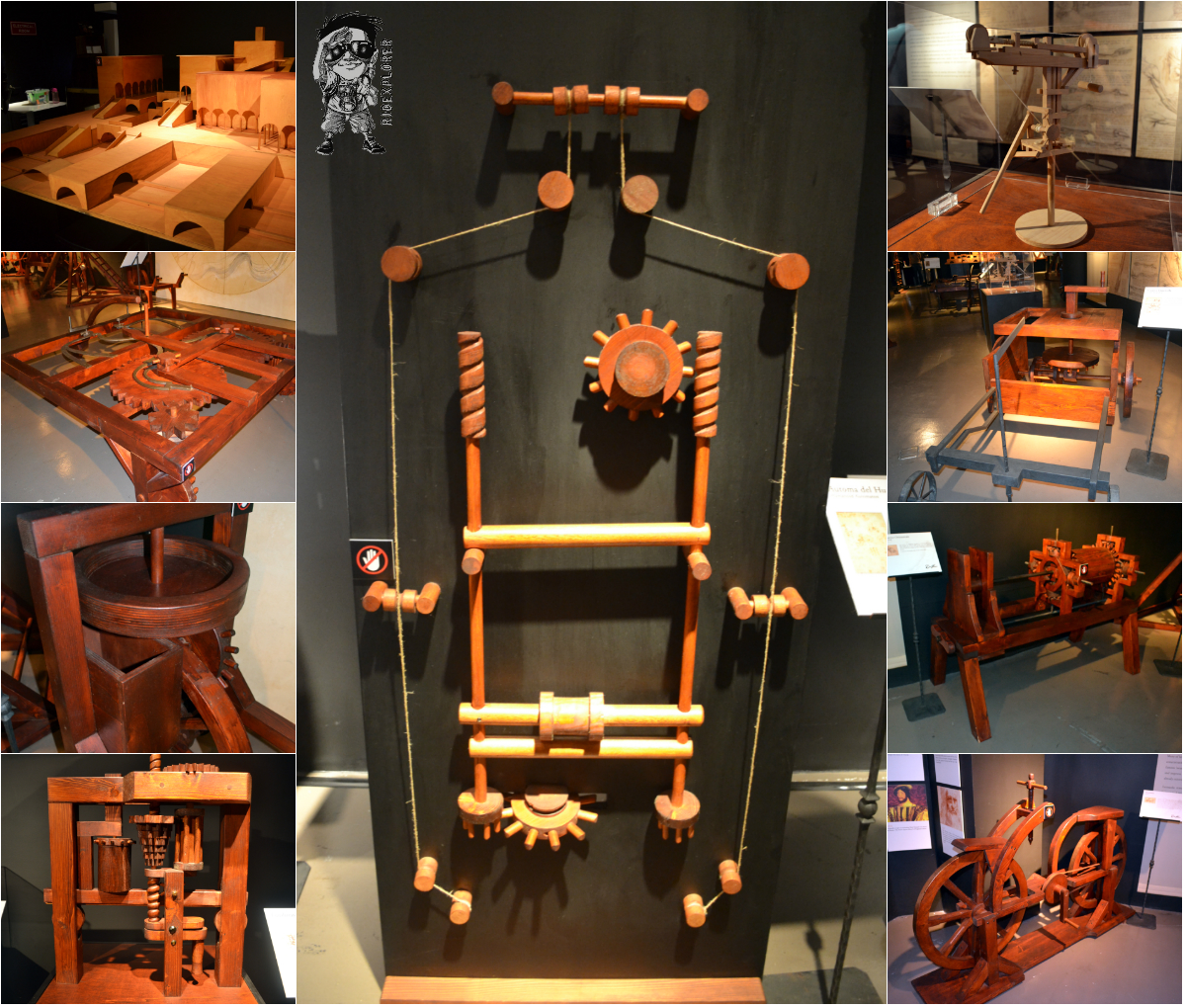
My personal favorite on this part of the exhibit was his concept of a robot that proves his cleverness having that idea on his mind during those times. His works presented were the basis of some machines we’re using these days like the horizontal drill, cranes, bicycle, and cart.
ANATOMICAL STUDIES AND THE VITRUVIAN MAN
“The human foot is a masterpiece of engineering and a work of art.” – Leonardo Da Vinci
He dissected and drew the bodies of more than thirty men and women of all ages in order to understand the beauty of the human proportions and the ways muscles and tendons work together when a body is in motion. Because the dissection of the human body was generally forbidden, Leonardo had to work in secretive and hurried conditions.
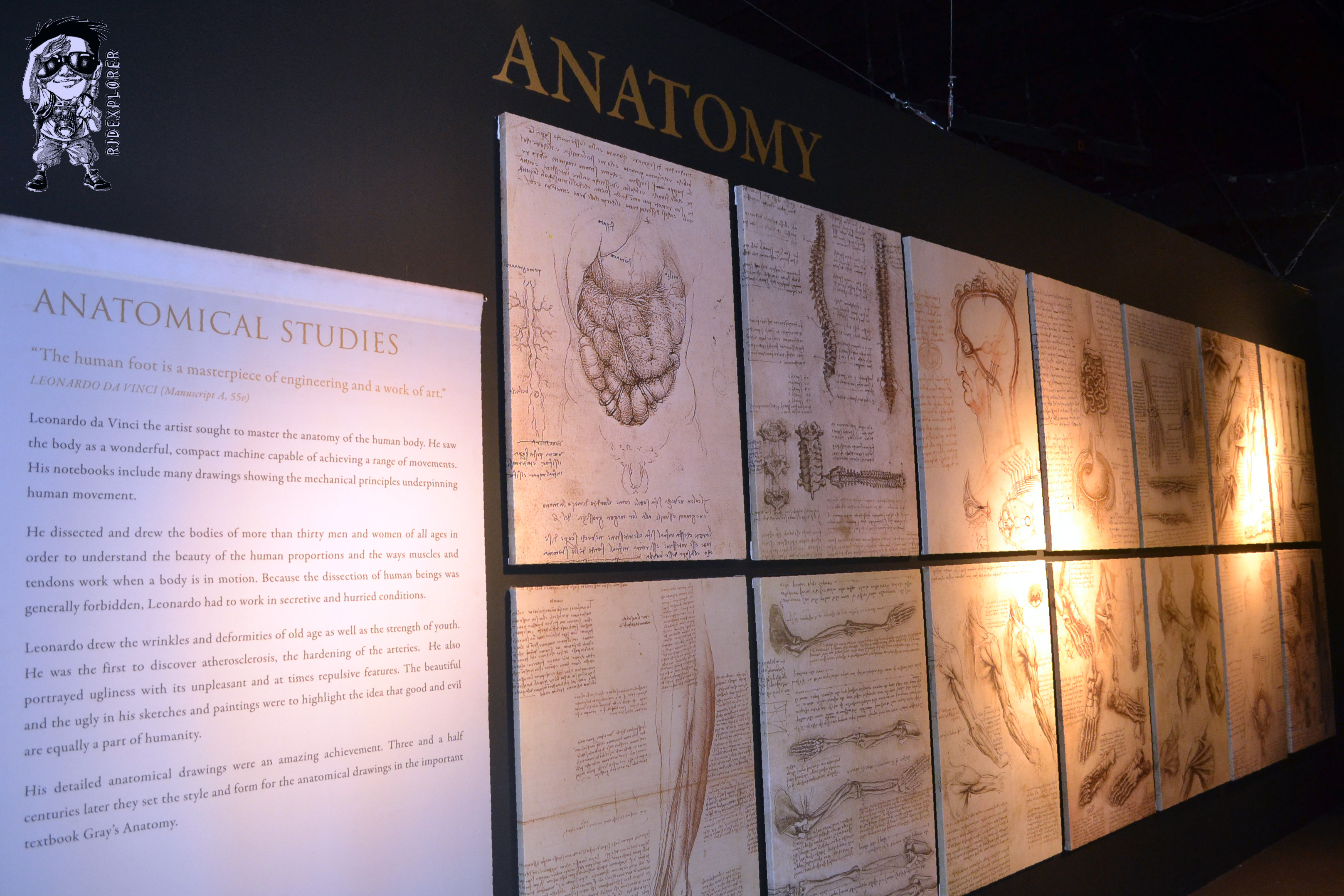
On this area, a 6-minute video presentation was being played discussing the story behind the Vitruvian Man, his drawing of a male in two superimposed positions with his arms and legs apart and at the same time inscribed in a circle and square. He believed that a certain “Golden Ratio” or a “Divine Proportion” is present in the human body which flaunts a pattern that displays balance and repeats throughout the natural world.
LIFE AND TIMES
Towards the end of his life, Leonardo began organizing his manuscripts. They were bequeathed to his pupil and heir Francesco Melzi, but were later dispersed and sold. Many of the manuscripts were lost. About 6000 pages of Leonardo’s notes and drawings survive, mostly bound in a number of notebooks or codices. On display are replicas of some of the most important codices.

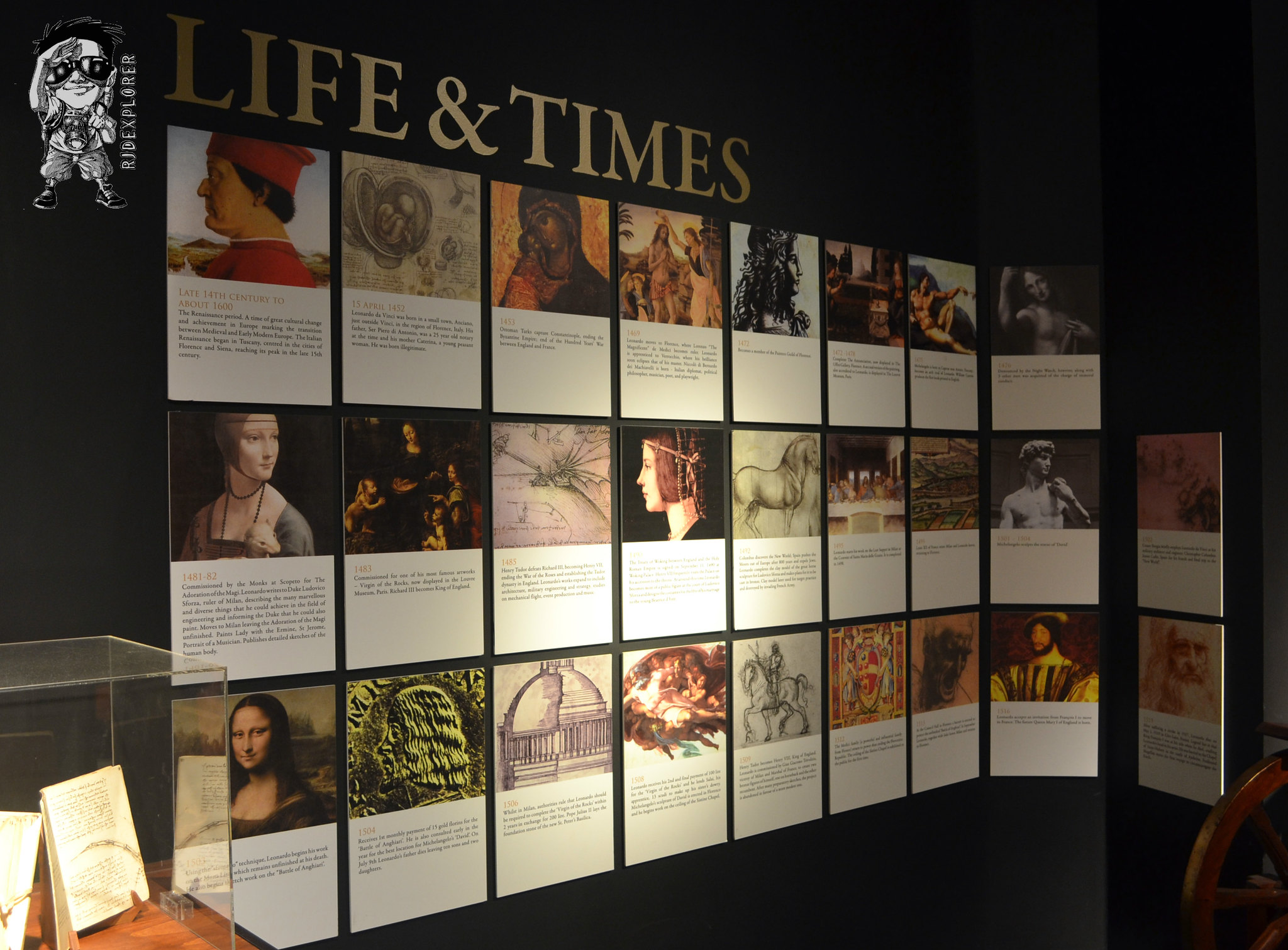
RENAISSANCE ART
When it comes to art, the first thing that enters my mind every time I hear the word painting is the very prominent Mona Lisa which is even more famous than the person who painted it, Da Vinci. On this part of the gallery, you will be given a chance to take a closer look to Da Vinci’s famous painting together with the Virgin of the Rocks, La Madonna Litta and The Lady with an Ermine. A video presentation was also being played narrating the story behind his painting The Last Supper.
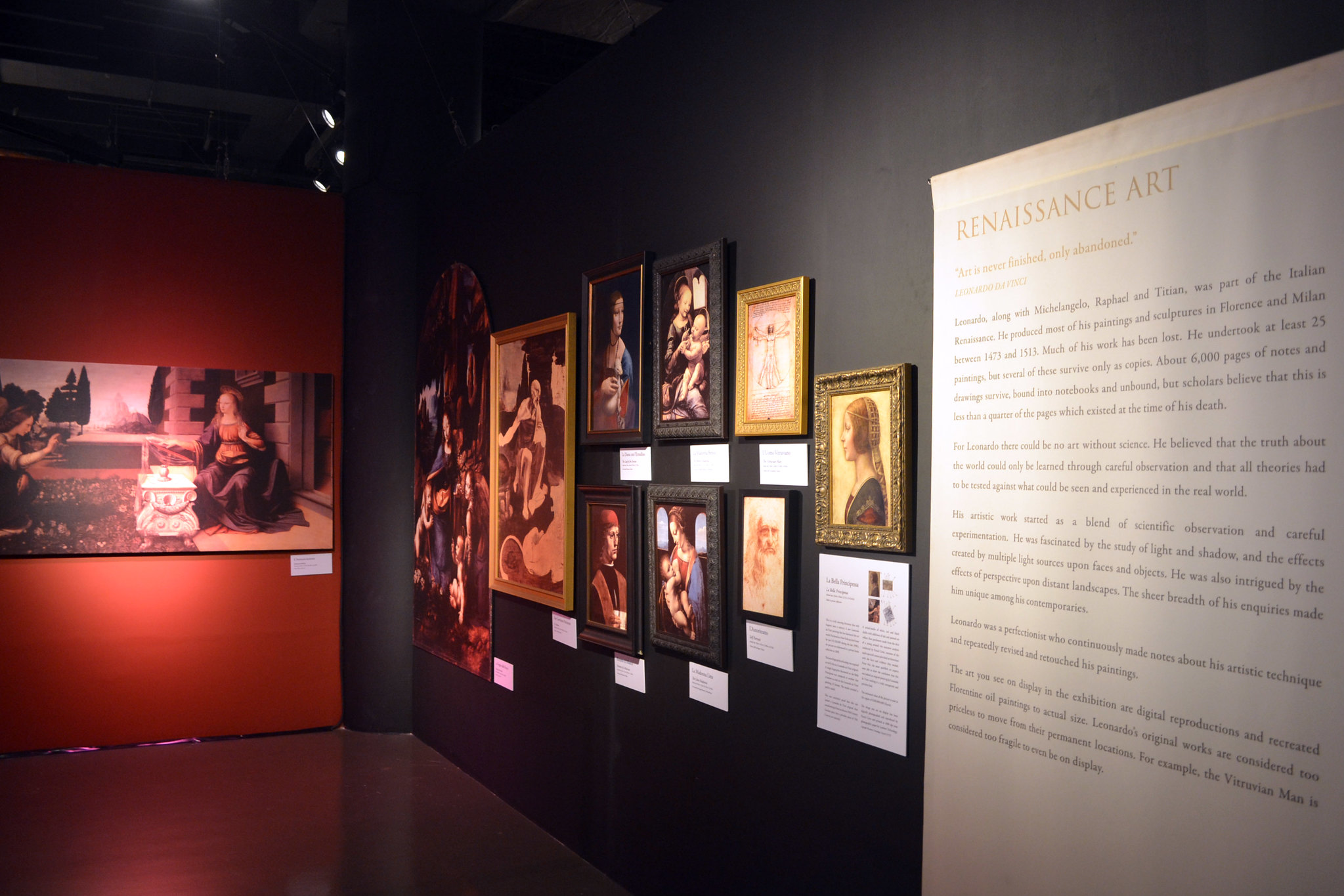
MILITARY ENGINEERING
Leonardo’s designs of war machines were done early in Milan (about 1483-1490) and upon his return to Florence around 1502-1504. In both cities, he became an influential strategist, advising generals and statesmen. Some of his early designs are practical and easily-constructed: like emergency swing bridges and ladders for assailing for the fortress.

The tank with its inside (photo on right) and the steam cannon
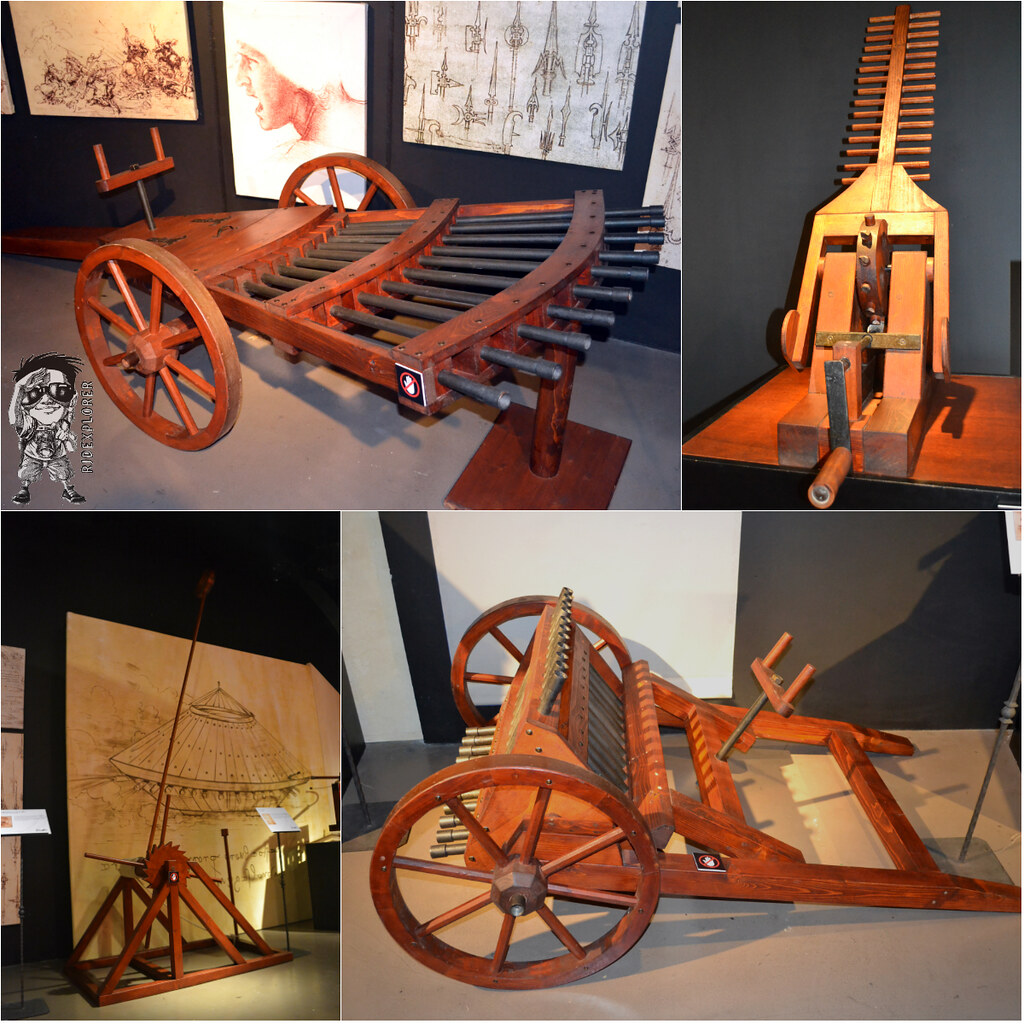
This part has 11 weapons of war with his concept of a tank as the major attraction; it is an armored vehicle capable of moving in any direction and bristling cannons on all sides. You can also check a steam cannon that doesn’t require gunpowder in projecting missiles.
INSTRUMENTS OF MUSIC, OPTICAL and TIME
“The poet ranks far below the painter in the representation of visible things, and far below the musician in that of the invisible things.” – Leonardo da Vinci

Loenardo considered music second only to painting among the creative arts. Most of his writings about music, including a “Treatise on Music”, have unfortunately been lost. But his contemporaries thought highly of him as a musician. He had a beautiful singing voice and was skilled at playing the lira de braccio, a forerunner of the violin.
A quirky display on this part of the exhibit is an octagonal mirror room that if you stood inside of it will enable you to see every part of yourself endless times. Also, a great discovery to be considered is his spotlight or projector which is just a box with a glass lens on one side provided with a candle as the light source.

HYDRAULICS AND AQUATIC
“Water is the driving force of all nature.” – Leonardo Da Vinci

Leonardo excelled at hydraulic engineering, and he remained fascinated by the behavior of water all his life. As a child, he observed the flow patterns of the stream near his town of Vinci in Tuscany. Later, he drew up plans for taming and controlling rivers and for draining floodplains and marshes.

I was amazed to found out that Da Vinci already had the idea of having a scuba diving equipment. In Leonardo’s design, a watertight leather tunic reinforced by armor to protect the airbag from being compressed in deep water. Cane hoses with leather joints toughened by spirals of metal drew in air from above the surface, and valves regulated the air intake. The hoses were supported by a floating cork which serves as a buoy.
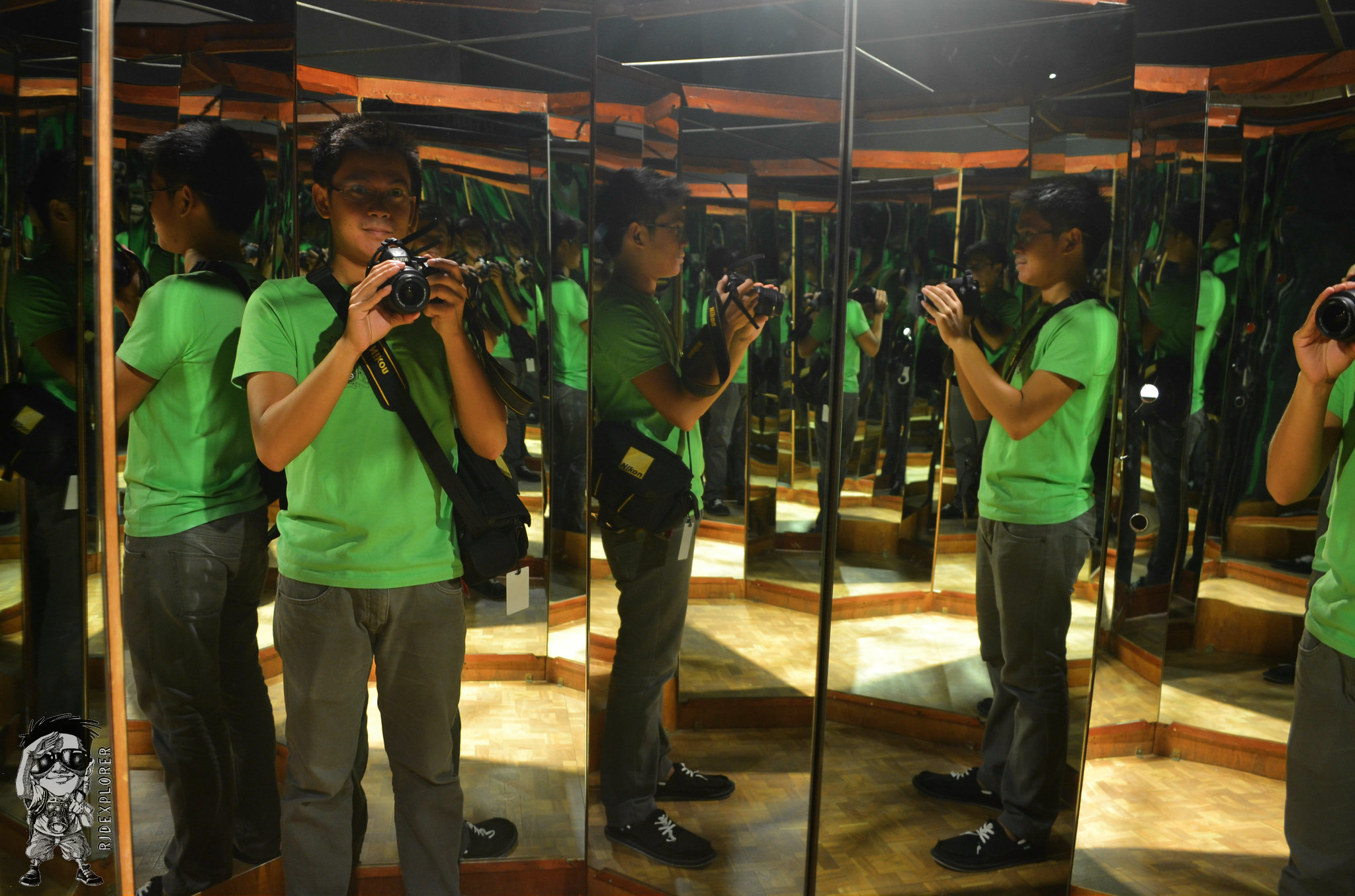
Da Vinci earned greater respect from me when I visited the exhibit. I was impressed by this man with his curiosity towards the natural world which led him to study and analyze these phenomena. I also appreciated his ambitious mindset that directed him to discover and invent machines to make human life easier and better.
The exhibit is open from Tuesdays – Sundays from 9am to 6pm but extended to 9pm on Sundays. It will run from September 1 to November 30, 2013 only. Admission fee for adult is Php250 and Php200 for children up to college students.
** Italized paragraphs were snippets from the exhibit’s information guides.







